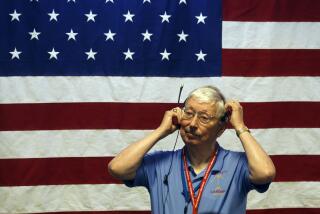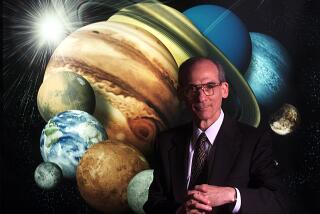JPL scientist killed in Van Nuys plane crash aided âextremeâ exploration
Alberto Enrique Behar dedicated his career to the idea that there was no place too hot, too cold or too remote for science.
At NASAâs Jet Propulsion Laboratory and Arizona State University, he developed robotic instruments that investigated Antarctic lakes, the deep ocean and volcanoes and helped determine there was once water on the surface of Mars.
âNot just going there and visiting and coming back and saying, âI did it,ââ said ASU colleague Jim Bell. âBut going there and trying to do groundbreaking scientific discovery.â
Behar, 47, died Friday when the small plane he was flying crashed shortly after takeoff from Van Nuys Airport. The National Transportation Safety Board is investigating what led the single-engine Lancair to lose altitude and slam into a busy intersection near the airport.
Behar was an experienced pilot and instructor for airplanes and helicopters, and the weather was clear.
âI canât see what would be the cause of something like this,â said Van Nuys pilot Kashif Khursheed. âHe was very knowledgeable, competent and thorough.â
Behar had survived plane trouble in the past. In 2011, an aircraft carrying Behar and flown by Khursheed developed engine trouble and made an emergency landing on a Santa Clarita roadway. No one was hurt.
âHe was very good in that crash,â Khursheed recalled. âHe kept quiet when he was supposed to be quiet. I was actually quite impressed.â
A native of Miami, Behar earned his doctorate in electrical engineering from USC. In a 2009 interview posted on JPLâs website, Behar said he was attracted to robotics because it required skill in multiple fields.
He worked at JPL in La Cañada Flintridge for 23 years and also held a research professor post at ASU, where he directed the Extreme Environments Robotics and Instrumentation Laboratory. Colleagues said his death was a profound loss for science. He was valued for bridging the divide between scientists trying to study an inhospitable environment and engineers whose robots could survive there.
âFrom his submarines that peeked under Antarctica to his boats that raced Greenlandâs rivers, Albertoâs work enabled measurements of things weâd never known,â NASA scientist Thomas Wagner said in a statement. âHis creativity knew few bounds. He is, and will forever be, sorely missed.â
As part of the NASA team exploring Mars with the Curiosity rover, Behar was responsible for a device that detected hydrogen on the planetâs surface as the rover moved.
Bell, a professor in ASUâs School of Earth and Space Exploration, said the instrument contributed to the teamâs conclusion there had been water on Mars.
Two years ago, Behar took a robot he and his ASU students had developed to one of the most remote parts of Antarctica to probe a sub-glacial lake.
Not all of his solutions were high tech. In a climate change study in 2008, he used rubber ducks to track the flow of melting glaciers in Greenland.
Behar is survived by his wife and three children.
Follow @latimesharriet
More to Read
Sign up for Essential California
The most important California stories and recommendations in your inbox every morning.
You may occasionally receive promotional content from the Los Angeles Times.











